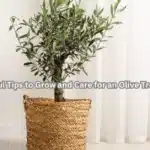Introduction
Houseplants give life to our homes, adding beauty and purifying the air. However, some of these green beauties secretly harbor dangers to your loved ones, especially if you have children or pets. Poisonous house plants can cause mild to severe health issues, making it important to identify and avoid them.
In this article, I will take you through 10 common but toxic houseplants. Plus, I’ll share safer alternatives and tips on how to handle these plants responsibly.

10 Common Poisonous House Plants to Avoid for a Safe Indoor Environment
1. Peace Lily (Spathiphyllum)
The first glance of Peace Lily’s elegant white blooms doesn’t seem to cause harm. But did you know it’s toxic to humans and animals?
Why it’s toxic: It contains calcium oxalate crystals, which irritate the mouth and throat.
Symptoms: Swelling, drooling, vomiting, and difficulty swallowing.
Real-life example: The cat of a friend took a nibble on the Peace Lily leaf and required a vet visit immediately.
Option: Instead, consider getting a Parlor Palm – a pet-friendly, non-toxic plant.
2. Dieffenbachia or Dumb Cane
Dieffenbachia boasts beautiful, patterned leaves that make it a popular choice for indoor plants, but toxicity is no laughing matter.
Why it’s toxic: Oxalates in its sap can irritate skin and mucous membranes.
Symptoms: A burning sensation, swelling, and in extreme cases, speech can temporarily be lost.
Note: Always use gloves to avoid touching this plant skin directly.
Substitute: There’s Cast Iron Plant, which is nontoxic and similarly very robust.
3. Pothos (Devil’s Ivy)
Pothos is great because it thrives on minimal attention. It can be harmful, however, if it enters your body.
Why it is toxic: Insoluble calcium oxalates.
Symptoms: Oral irritation, salivation, and vomiting in animals; stomach aches in people.
Safety tip: Place this plant out of children’s and pets’ reach in your vertical garden arrangement.
Alternative: Use a Spider Plant, which is nontoxic and does well indoors.
4. Snake Plant (Sansevieria)
Snake Plant, also known as the “Mother-in-Law’s Tongue,” is both fashionable and slightly hazardous.
Why it’s toxic: It contains saponins, which can cause gastrointestinal problems.
Symptoms: Nausea, diarrhea, and vomiting.
Pro tip: If you like the look, keep it in places inaccessible to kids and pets.
Alternative: Choose a Bamboo Palm for a safer, tropical vibe.
5. Oleander (Nerium)
Oleander’s pink and white flowers are stunning, but it is one of the most toxic houseplants.
Why it’s toxic: Contains cardiac glycosides, which affect heart function.
Symptoms: Nausea, irregular heartbeat, and even fatal outcomes if ingested.
Cautionary tale: A neighbor’s toddler ended up in the ER after chewing on an Oleander leaf.
Alternative: Use a flowering Anthurium, but be aware that it’s mildly toxic.
6. Philodendron
Philodendron is one of the most common vertical garden plants, but can be hazardous to inquisitive pets and children.
Why it’s toxic: Contains calcium oxalates.
Symptoms: Oral irritation, swelling, and vomiting.
Recommendation: Display it on decorative plant shelves to keep it out of reach.
Alternative: Replace it with Boston Fern, which is non-toxic and ideal for vertical gardens.
7. English Ivy (Hedera helix)
English Ivy’s cascading vines make any home charming, but it conceals a deadly secret.
Why it’s toxic: Contains triterpenoid saponins.
Symptoms: Skin rashes, breathing difficulties, and vomiting if ingested.
Personal tip: My Ivy hung by the window, but I learned its dangers and replaced it with a pet-friendly plant.
Alternative: Try Heartleaf Philodendron; it is safer yet equally beautiful.
8. ZZ Plant (Zamioculcas zamiifolia)
This modern, stylish ZZ Plant with its shiny leaves is an asset in low-maintenance designs, yet can be toxic if eaten.
Why it’s toxic: Has calcium oxalates
Symptoms: Stomach disturbance, mouth irritation, and skin rashes.
Place it in offices or other pet-free and child-free rooms.
Alternative: The look can be achieved with the Jade Plant, with a lot less danger.
9. Sago Palm (Cycas revoluta)
These fronds of the Sago Palm are so pretty yet poisonous to boot.
Why it’s toxic: Contains cycasin, which is harmful to the liver.
Symptoms: Vomiting, seizures, and liver failure in pets.
Warning: Even a small nibble can be deadly for dogs or cats.
Alternative: Try an Areca Palm for a similar tropical flair.
10. Caladium (Elephant’s Ear)
With vibrant, heart-shaped leaves, Caladium is a favorite for brightening indoor spaces, but it’s not pet-friendly.
Why it’s toxic: Contains calcium oxalates.
Symptoms: Painful swelling, drooling, and difficulty swallowing.
Hack of safety: For the same look, go for false Caladium.
Alternative use bright Bromeliads that would serve well as a safe option
How to stay safe while using poisonous house plants
Research before buying: The number of toxins if you have kids or pets.
Identify your plants: use tags to note which of them are poisonous.
Away from reach: Hang pots, or place the plants high enough.
Educate your household : Make everyone aware of which plants are off-limits.
Make use of gloves: Avoid dermatitis by using gloves.
Conclusion
Houseplants beautify and have many merits, but some may be life-threatening to your family as well as pets. You might enjoy a greener, more lively home by opting for safer alternatives or even by safe handling of poisonous plants.
Which dangerous house plants shocked you the most? Share your thoughts in the comments below!
You can also read our other website articles regarding blogging.
Indoor Plants Related
Fragrances & Beauty Related
Fashion Related
Phone Related
Home Decoration
Islamic
Food & Beverage
Health
Sports










